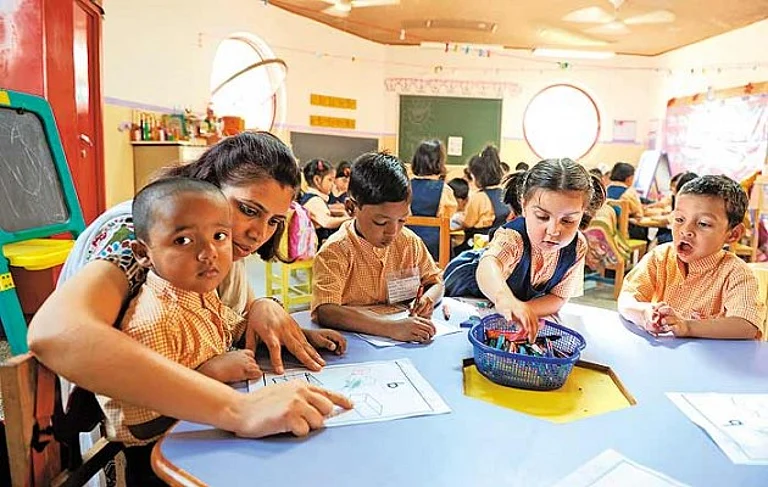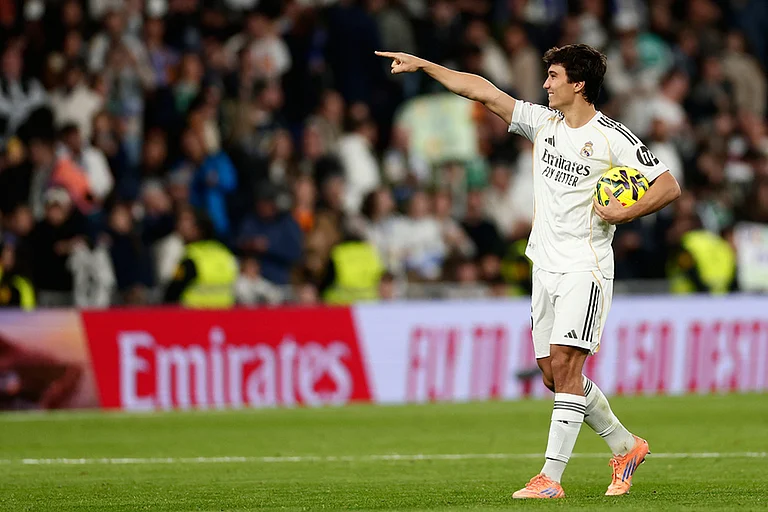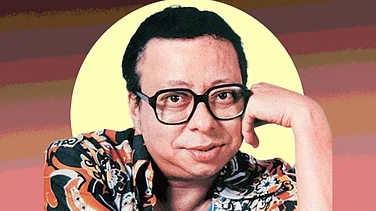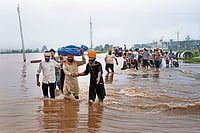Punjabi poetry has always been overtly political in style and content. Guru Nanak, the first Sikh Guru, challenged Mughal emperor Babur in his Baburbani as leading a paap ki janj—army of sin. Sufi poets like Bulle Shah openly criticised the dominant orthodoxies of the time. Popular qissas—stories in verse—celebrated the defiance of lovers like Sohni-Mahiwal and Heer-Ranjha.Vaars, heroic ballads eulogising warriors, social bandits, religious heroes and freedom fighters, celebrated their defiance, resistance and sacrifice against political tyranny. The folk poetry sung by the bards, dhādi and kavishars, along with the Sikh ardas, forms the collective consciousness of Punjabis. In the 20th century, this tradition was carried forward by poets like Avtar Singh Sandhu aka Paash, Sant Ram Udasi, Lal Singh Dil and Harinder Singh Mehboob.
In the contemporary world, popular culture epitomised by its famous Punjabi music has carved a niche for itself in the global scene. From its folk origins, Punjabi music has spread its wings, both in Punjab and outside. A galaxy of performers including Gurdas Mann, Malkiat Singh, Hans Raj Hans, Jazzy Bains, Babbu Mann and Diljit have ensured that Bhangra Pop held sway in pubs, gyms and marriage concerts all over the country. Punjab’s close connection with its diaspora ensured that western influences like hip-hop, rap and beats creatively merged with Punjabi dhols and catchy desi lyrics to create a distinctive genre. Punjabi music now is a Rs 1,000-crore industry rivalling Hindi music.
Punjabi singers like Gurdas Mann, Diljit, Babbu Mann and Moosewala have a cult-like following. From Brampton to Bangalore, they perform to packed concerts. They have millions of followers on social media, including A-listed Bollywood stars, and their hits often top global charts.
Despite their eminence, most Punjabi singers, with a few exceptions like Babbu Mann, Rabbi Shergill and Raj Kakra, have traditionally shied away from overtly political themes. Babbu locked horns with deredars (godmen) in his Ik baba Nanak Si and eulogised political rebels in his Aashiqan di line. In Jugni, Rabbi Shergill lamented the human tragedy in Kashmir, migrations in Punjab and the inequality of Mumbai. Sikh ethnic nationalist themes were touched by lyricist-turned-singer Raj Kakra in Singh Baghi and other songs.
These exceptions aside, the long years of militancy in the ’80s and early ’90s, followed by the “police-politician raj”, ensured that singers and other cultural luminaries largely eschewed political issues. In fact, the state actively promoted popular singers and their concerts during the ’90s as symbols of return of normalcy and as part of the government’s war of perception against militants. Until the farm agitation, most Punjabi artistes had been apolitical and silent on pressing political issues or were subservient to politicians and police officers, much like their Bollywood counterparts.
Even as Punjabi music beat the conventional path, Punjab was yearning for change for nearly a decade. Multiple socio-economic crises, which the closed and venal Congress and Akali-led political system failed to address, had led to a number of agitations, like on the issues of beadabi (sacrilege) and the whitefly infestation of crops, and had also seen the rise of new political outfits like the People’s Party of Punjab (PPP) and AAP promising “change”. Much of the energy and drive to these movements were provided by a young, literate, aspirational and networked society, adept at using new communication technologies. This restlessness and urge for change finally culminated in the farmers’ agitation that rocked India and the world in 2020. The Punjab-led and sustained protests lasted more than a year and mobilised a majority of Punjabis, both in India and abroad. Starting from Punjab, it eventually encompassed Haryana, western UP and northern Rajasthan and ended with a year-long dharna at the Singhu, Tikri and Ghazipur borders of Delhi. The agitation forced the Modi government to withdraw the three contentious farm laws.

The extra edge to the movement was provided by the support of Punjabi singers and performers. Right from the start of the agitation, singers like Kanwar Grewal, Ranjit Bawa, Jass Bajwa, Bir Singh and others composed songs and gave rousing speeches at agitation sites, attracting people by the thousands. Hailing from rural and agrarian backgrounds, pulled by history and pushed by fan clubs, these singers ensured massive mobilisation for the movement. Bridging the gap between its octogenarian leadership and young support base, Punjabi singers played a very important role in triggering and sustaining the movement. Songs of Kanwar Grewal, like Ailaan, Pecha, Itihaas and Patshah almost became the anthems of the movement. Virtually the who’s who of Punjabi music industry—from Babbu Mann to Diljit Dosanjh, from Sidhu Moosewala to Amrinder Gill—stood with the farmers. They composed songs, organised concerts, gave speeches and interviews to the media and sustained the movement in all its ebb and flow. The now-famous Twitter feud between Diljit Dosanjh and actress Kangana Ranaut epitomised the wholehearted manner in which the Punjabi music industry stood with the farm agitation.
Hundreds of songs and poems were composed during the agitation, including runaway hits like Punjab Bolda (Ranjit Bawa), Assin Wadhange (Himmat Sandhu), Delhi A (R Nait) and Mitti de Putro We (Bir Singh). These songs invoked the history and icons of Punjab, from the Sikh Gurus to the freedom fighters and their struggle, suffering, resistance and defiance against an arrogant Delhi. Determination to hold on to their land and a new-found solidarity with Haryana were also common themes of many of these songs. Interestingly, many Punjabi songs came from Pakistani Punjab too in solidarity with the farmers movement, which included Punjab by Shehjad Sidhu and Baghi Punjab by A.S. Chatha.
The metamorphosis of Sidhu Moosewala, the recently-slain hip-hop artist, is an interesting case. Moosewala carved a niche for himself in the highly innovative and competitive field of Punjabi music ever since his arrival on the scene in 2017 with G Wagon and So High. These high-octane, over-the-top songs celebrated guns, gangs, tractors, land and Jatts.
During the farm agitation, Moosewala came up with Punjab, a highly defiant political song in the dhadhi tradition, about Punjab’s uniqueness, with defining radical connotations. This was a turning point in his career. He followed this up with 295, a searing indictment of the religious and political elite, and Scapegoat, which was a shikwa with Punjab’s voters after his loss on a Congress ticket from Mansa. During his last “political avatar” Moosewala was increasingly lending his voice to environment, state and identity issues. His song SYL, released posthumously, was banned for its radical connotations and calls for sovereignty.
The trend of prominent singers lending their voices to pressing political issues of the state has only intensified after the farm agitations. Babbu Mann, Ranjit Bawa, Gul Panag and others formed the Joojhda Punjab, a forum to highlight pressing socio-economic and political issues of the state before the recent Punjab assembly elections. The likes of Kanwar Grewal are now lending their voice for the release of Sikh political prisoners. His recent song Rihayyi was banned by the Centre.
While the dominant discourse in Punjabi music had been Jatt Sikh-centric and their concerns about land, identity and autonomy, a parallel sub-genre of ‘Chamar Pop’ has also emerged in recent years. Centred in the Doaba region, singers like Ginni Mahi and Roop Lal Dhir have asserted their Dalit identity and produced a counter-narrative through songs like Charrat Chamaran Di and Haq.
With a much younger and aspirational society, and with the added confidence of victory in the farmers movement and the duopoly ending of the old Akali-Congress hegemony in the state, the trend of assertive and politically-charged music will only grow in Punjab.
(This appeared in the print edition as "Songs of Rage and Resistance")
(Views expressed are personal)
Harjeshwar Pal Singh is an assistant professor of history at SGGS College, Chandigarh






















